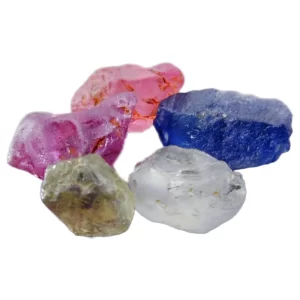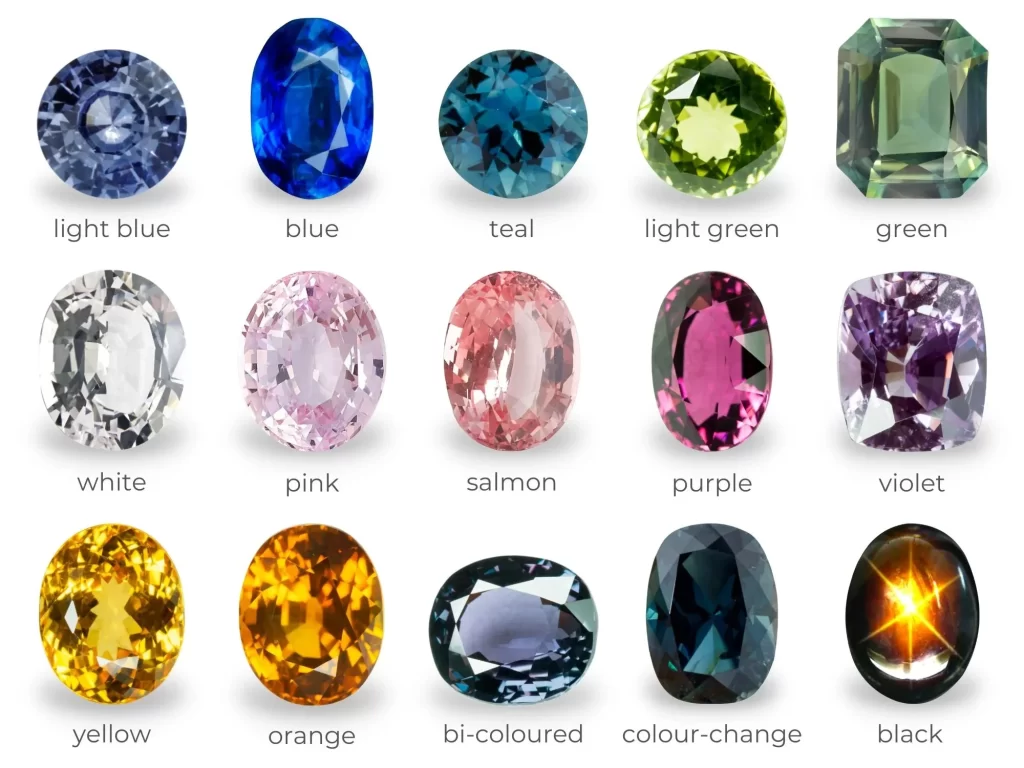
Sapphire is a precious gemstone long associated with wisdom, royalty, and divine favor. Best known for its deep, velvety blue hues, sapphire is actually a variety of the mineral corundum and comes in nearly every color of the rainbow—except red, which is classified as ruby.

History & Lore
The name “sapphire” comes from the Latin sapphirus and Greek sappheiros, meaning “blue stone,” though ancient references may have also included lapis lazuli. Revered for millennia, sapphires adorned the robes of priests and the crowns of kings, symbolizing truth, integrity, and heavenly protection.
Blue sapphire has remained the most iconic variety, often associated with nobility and romantic fidelity. However, fancy sapphires in shades of pink, yellow, green, violet, white, and the rare padparadscha (a unique pink-orange blend) are equally captivating. Due to its exceptional hardness—second only to diamond—sapphire is a popular choice for both fine jewelry and industrial applications. As the birthstone for September, sapphire represents clarity of thought, inner peace, and a commitment to higher ideals. It has also become a traditional gemstone for engagement rings, chosen to symbolize loyalty, trust, and lasting love.
Meaning & Symbolism
Metaphysically, sapphire is considered a stone of wisdom and insight. It is believed to stimulate the third eye and throat chakras, enhancing intuition, communication, and mental focus. In crystal healing, sapphire is used to calm the mind, relieve mental tension, and restore spiritual balance. Blue sapphire in particular is thought to bring serenity, aid meditation, and support honest expression. Other colors carry their own energetic signatures: yellow sapphire is linked to prosperity, pink sapphire to emotional healing and love, and white sapphire to clarity and spiritual awakening.
Origin & Regionality
Sapphires are mined in many parts of the world, with each region producing stones of distinct color and character. Sri Lanka (formerly Ceylon) is one of the oldest and most famous sources of sapphires, known for its vibrant and often lighter-toned blue stones, as well as stunning fancy colors like pink and yellow. Kashmir, nestled in the Himalayas, produced some of the most legendary sapphires in the 19th century—prized for their cornflower blue color and velvety texture. Though Kashmir sapphires are now extremely rare, they remain some of the most valuable gemstones ever mined.
Myanmar (Burma) has yielded deep royal blue sapphires with exceptional clarity, while Thailand and Cambodia are known for darker, inky-blue stones. Madagascar has become a major player in the sapphire market in recent decades, producing a wide variety of colors and high-quality gems. Australia is also a significant source, particularly of dark blue and greenish-blue stones. In the United States, Montana is home to sapphire deposits, especially in the Rock Creek and Yogo Gulch regions, where sapphires often exhibit pastel shades and exceptional brilliance.
Each location imparts subtle differences in hue, saturation, and crystal structure, allowing connoisseurs to distinguish origin by eye or lab analysis. Whether deep blue or rainbow-hued, sapphire’s enduring appeal lies in its striking beauty, symbolic depth, and rich global heritage.

